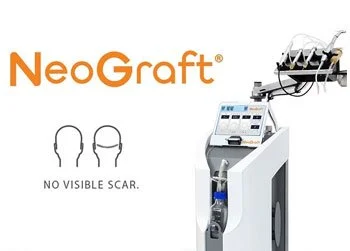You might have skilled radiologists and top-notch imaging equipment but if your billing numbers aren’t clear, it’s like running your practice with one eye closed. Many Radiology practices focus only on getting claims submitted. But there’s a bigger picture your data is trying to show you.
Good billing isn’t just about sending claims on time. It’s about having full visibility into how your revenue is performing. And that means tracking the right Key Performance Indicators, or KPIs. If you are working with a radiology billing company or thinking about doing so, these KPIs help you stay in control. They also help you make sure your billing partner is doing their job right.
4 most important radiology billing KPIs you should be watching:
1) First-pass resolution rate
What does it tell you: How many claims are getting paid in the first chance without rework.
| Category | Ideal | Problem Zone |
|---|---|---|
| FPRR | ≥ 90% | < 85% |
Why it matters:
If your First Pass Resolution Rate is low, it generally means your claims are getting denied or delayed because of mistakes that can be avoided like: using the wrong CPT codes.
The problem:
Every time a claim gets denied, you or your team have to fix it and send it again. That takes extra time, and those minutes quickly turn into hours of lost work and delayed payments.
How you can fix it:
Start by reviewing your claims before you send them out to catch small errors early. Ask your radiology billing services partner to watch for patterns like codes that keep getting denied or common documentation issues. You can also use tools that check insurance eligibility and prior authorization automatically. These simple yet proactive steps can help you get paid faster.
2) Days in accounts receivable (A/R)
What does it tell you: How long does it take for you to receive the payment after you have served a patient.
| Category | Ideal | Risk Zone |
|---|---|---|
| A/R Days | < 40 | > 50 |
Why it matters:
Your A/R days are high. It means you are waiting too long to get paid. You are providing services today, but it might take 60 days or more for the money to come in.
The problem:
Such delays can make it harder for you to pay your staff on time. It is also tough for you to invest in better technology. Most importantly you should be able to keep your practice running smoothly without relying on credit or loans.
How you can fix it:
You can start by looking at your A/R by payer and how old the claims are. This will help you spot where payments are getting stuck. Please don’t wait until the end of the month. You should try following up on overdue claims every week. It will help keep your cash flow steady.
You might be working with a billing partner. In that case, make sure they are using tools that send out reminders and follow up automatically. And if you outsource radiology billing, you can ask for monthly reports that show clear trends in A/R days and how each payer is performing.
3) Rate of denials
What does it tell you: The percentage of claims being denied by the insurance companies.
| Benchmark | Ideal | Warning |
|---|---|---|
| Denial Rate | < 5% | > 10% |
Why it matters: If your denial rate is high, it’s a warning sign that money is slipping through the cracks in your billing process.
The problem: Denied claims can take weeks to fix and resubmit. This is a scenario when you are not collecting what you have earned, and that can hurt your overall revenue.
How you can fix it: You can start by breaking down the types of denials you are getting. Are they due to coding mistakes, missing medical necessity, or eligibility issues? Please try to understand the reason,
You can set up a simple monthly review to understand these patterns before it is too late. Please make sure you are using payer-specific rules when submitting claims to avoid errors upfront. Your radiology billing team might be lagging to help you do this. Now, it might be time to ask for better support or consider working with a partner who truly understands this billing field.
4) Net collection rate (NCR)
What does it tell you: The percentage of collectible revenue that you are collecting for the services offered.
| Benchmark | Ideal | At Risk |
|---|---|---|
| NCR | ≥95% | < 90% |
Why it matters:
Your Net Collection Rate (NCR) shows how much of the money you are supposed to collect is coming in. It’s a clear measure of how well your billing process is working.
The problem:
If your NCR is low, you might be missing out on revenue without even realizing it. This can happen because of underpayments, write-offs, or poor follow-up on claims.
How you can fix it:
You can start by checking if the payments you are getting match what you expected. A lot of underpayments go unnoticed simply because no one is tracking them closely. You should also watch out for silent PPO discounts or strange payer adjustments that quietly cut into your revenue.
You should ask your radiology billing company to send you clear monthly reports that highlight any payment gaps. And make sure they are following up on all shortfalls, not just the big ones. That way, you keep more of what you have earned.
Don’t just track, take an action:
Tracking KPIs is just the first step. What really counts is how you use that data to improve your billing and collections. Here is the truth: Even the best radiology billing services can’t help you if you don’t know how your billing is performing. If your current billing partner isn’t giving you clear reports, or if you don’t even know what your key numbers are, it might be time to look for a better support.
When you and your team (or your billing partner) focus on the right KPIs, you can take control of your revenue cycle. You will spend less time fixing mistakes and more time getting paid what you deserve. Because “clean claims” alone don’t pay the bills anymore.



